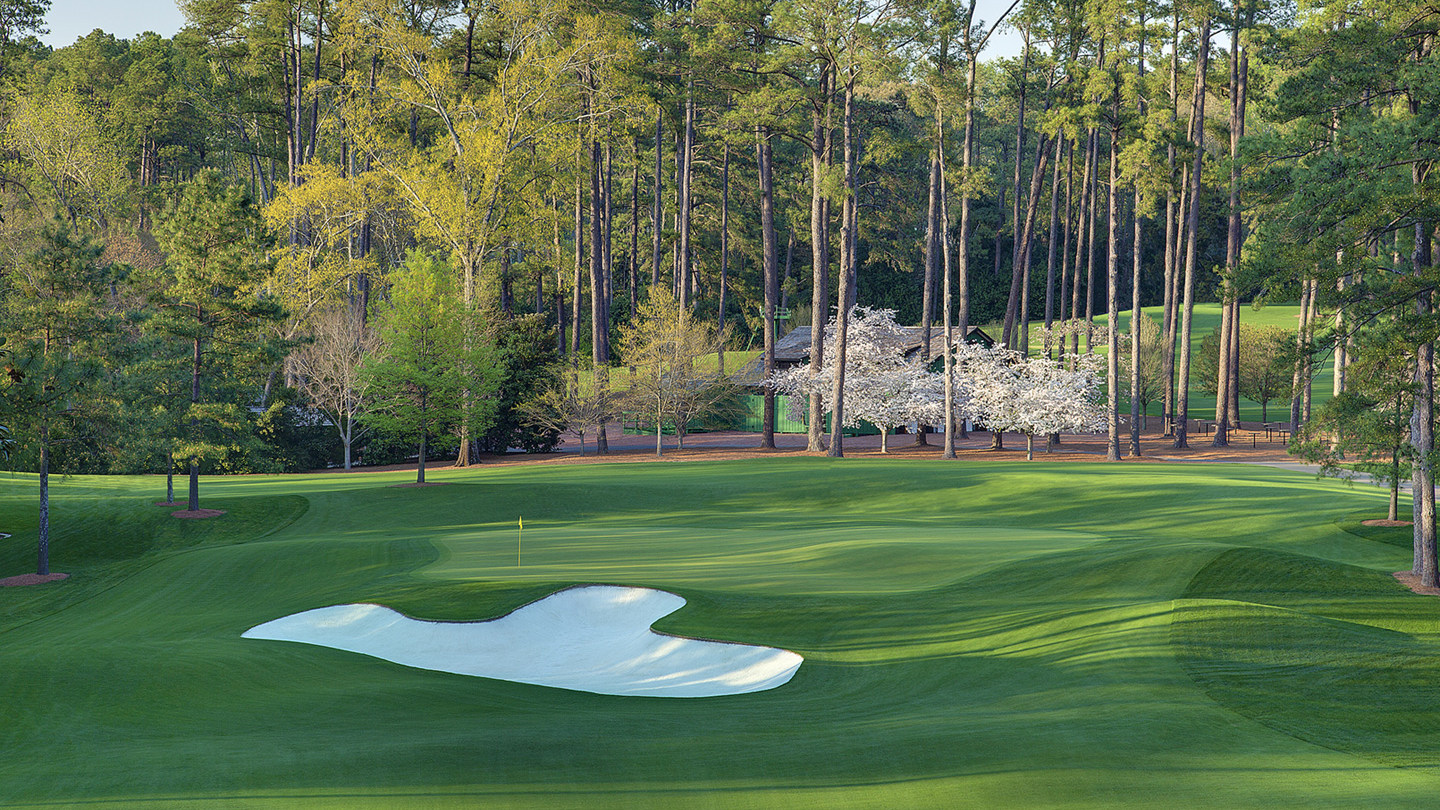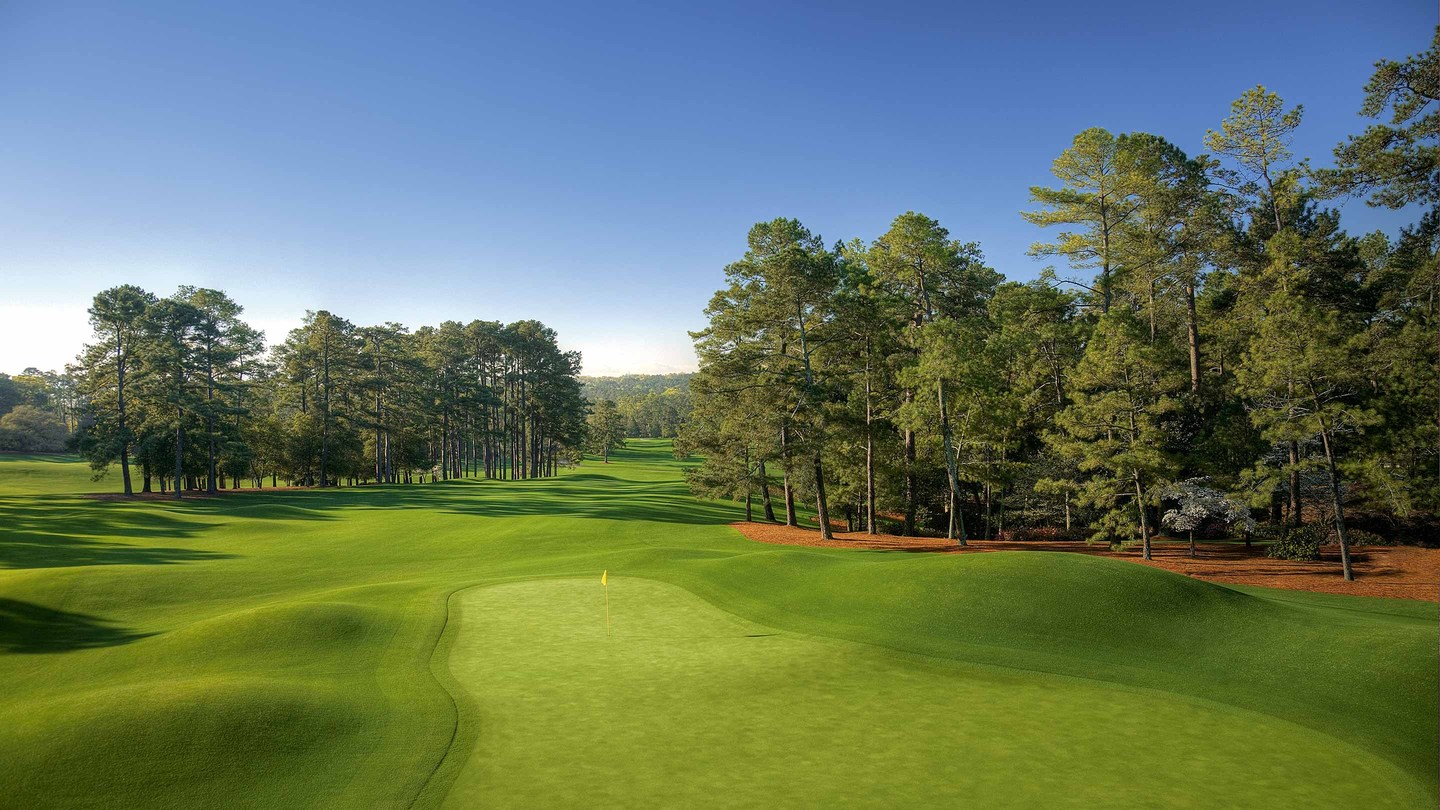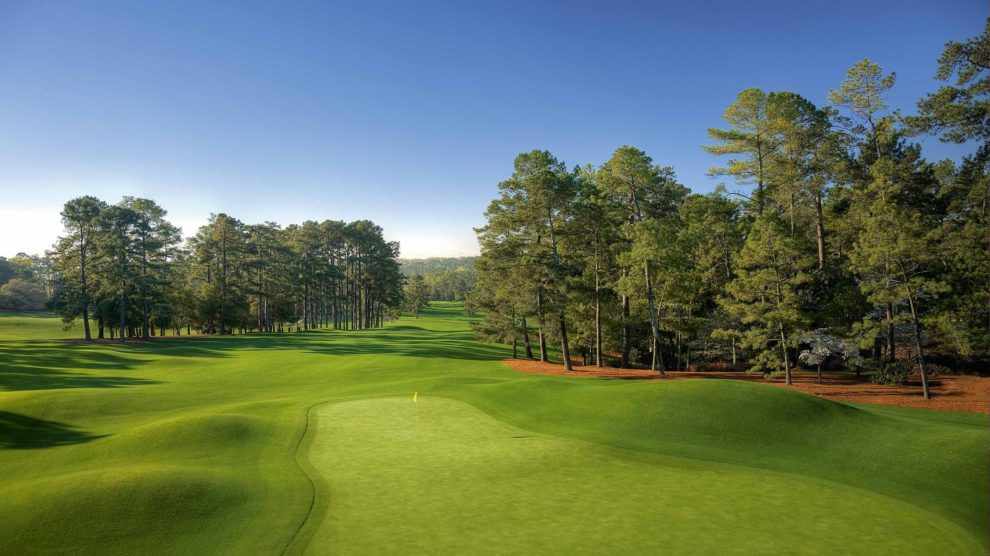The saying is "the Masters doesn’t begin until the back nine on Sunday," but you can’t get to the back nine without playing the front nine.
And that’s no walk in the park.
Maybe Tiger Woods can fire a front-nine 40 during the first round and still win the Masters, but mere mortals can’t. While both par 5s are reachable in two and birdie opportunities, the par 3s are bears. And as last fall’s Coronavirus-delayed Masters proved, sometimes the issue is resolved early and the back nine is more akin to a coronation.
Let’s take a close look at the front nine and the challenges it poses for the 2021 Masters.

First Hole, Tea Olive, par 4, 445 yards
5th-hardest hole in 2020 (1 being hardest, 18 being easiest)
The first hole used to be a warm, welcoming opener, but Tom Fazio’s “Tiger-proofing” of the golf course in the early 2000s put an end to that. After Fazio lengthened the hole by 50 yards, the first now features one of the most brutish opening tee shots in major championship golf.
Factor in the pressure of Thursday morning and suddenly that walk from the practice green to the first tee may be as unsettling as the gladiators’ walk into the Coliseum of Rome.
The opening shot is a risk-reward puzzle: Dare you try to carry the bunkers for a short iron in, or will you lay back and risk a tougher approach with a longer club? Miss the fairway, and you’re begging for a par, especially if you’re in the deep fairway bunker. Hit it over the bunker, and you have a wedge in.
It’s crucial to get off to a good start at Augusta and it’s frequently feast or famine at the first. The green features some of the softest contours on the course.
Second Hole, Pink Dogwood, par 5, 575 yards
18th-hardest hole in 2020
“Full many a flower is borne to blush unseen and waste its sweetness on the desert air,” wrote Thomas Gray, and that’s how I feel about Augusta’s second hole. One of the most entertaining holes on the course comes so early in the round, it’s often lost in all the whoop and crash of the rest of the course, particularly the back nine. But what a spectacle for the patrons!
Bombs away! The green is reachable in two even with a 3-wood off the tee. It’s all downhill on the second shot and the green contours will feed a ball to a back right hole location on Sunday. Just ask Louie Oosthuizen, whose albatross in 2012 electrified the pines and catapulted him into a playoff for the green jacket. He narrowly lost to Bubba Watson.

Third Hole, Flowering Peach, par 4, 350 yards
12th-hardest hole in 2020
The shortest par 4 at Augusta national can still cause acid reflux in a golfer, even with a wedge in their hands. Some choose to lay back with an iron for a full wedge, while others will bomb driver and gauge a wedge out from whatever perdition they may find. But the landing area is really just a tiny plateau. Hit it short, and the wedge will spin back off the green. Hit it hole high, and it may get a hard first skip and scoot over the green.
Despite its diminutive length, the third played to a surprising 3.97 scoring average last fall, much higher than what you’d expect from just reading the scorecard yardage.
Fourth Hole, Flowering Crab Apple, par 3, 240/180 yards
8th-hardest hole in 2020
Architect Alister Mackenzie looked to St. Andrews’ Old Course frequently for inspiration at Augusta National, and the Eden Hole, No. 11 at the Old Course, is the source of Augusta’s fourth. With a version of Hill bunker on the left and Shell bunker on the right, the tee shot is played into a valley where the swirling winds are nearly as fickle as the 12th. Jordan Spieth wrote in an online overview of the hole, “The idea is to hit it 10 feet left of every hole location, and commit to that.” Any mishit to the right will end up in the front right bunker or worse. Shots short of back hole locations will face a long, difficult two-putt over a swale.
The players may see the tee box moved up one day, but that’s a big maybe. And yes, 240 yards is ridiculously long for an Eden Hole; Augusta’s fourth may be the longest Eden hole in American golf (though Forsgate Country Club in New Jersey may challenge for the title of hardest Eden hole).
Fifth Hole, Magnolia, par 4, 495 yards
Hardest hole in 2020
Another iconic hole from St. Andrews proved Mackenzie’s inspiration for the fifth: the mighty and venerable 17th, the Road Hole. The fifth is the centerpiece of what has become known as Augusta’s “Other Amen Corner,” which also includes the tough bookend par 3s that sandwich this brutally long par 4, the hardest hole at the Masters last year.
The tee shot calls for a slight fade to avoid the fairway bunkers left. Ordinarily it’s a 200-210 yard shot into the kidney-shaped green with curvaceous contours. In that respect the hole also resembles Mackenzie’s seventh at Crystal Downs in Michigan. Mackenzie’s spin on the Road bunker is so enormous, players swear its shaping affects even short putts, particularly those into the grain.

Sixth Hole, Juniper, par 3, 180 yards
9th-hardest hole in 2020
This short-ish par-3, Mackenzie’s version of the Redan Hole (No. 16 at North Berwick in Scotland), was where Dustin Johnson seized control of the 2020 Masters in the final round and never looked back. Augusta’s sixth is so often overlooked because its back-nine par-3 sisters at Nos. 12 and 16 are more treacherous and dramatic. But the sixth is dangerous; miss the green and you’re facing either a difficult bunker shot, or a pitch over a hill where you can’t even see the cup.
That’s what South Korea’s Sungjae Im faced. He had just cut DJ’s lead to one shot after DJ started the day three shots clear. Moreover, Dustin was leaking oil and fighting his swing. It looked for all the world that we were going to have a dogfight in the dogwoods Sunday afternoon, but then Im airmailed the green. DJ dropped an 8-iron to seven feet for a two-shot swing.
The lead was three again, and Im never seriously threatened after that.
Seventh Hole, Pampas, par 4, 450 yards
6th-hardest hole in 2020
Also lengthened by Tom Fazio as part of his unsuccessful “Tiger-proofing” (all he did was make Augusta more difficult for everyone else), the seventh was originally meant as a breather hole. Now it’s anything but. Driver is a must, as a lesser club leaves the golfer a downhill lie with the ball below his feet to an elevated green.
At a whopping 100 yards longer than its original and intended length, and with a green still designed to accept a lofted club, the seventh gives golfers trouble, even with nuclear weapons for drivers. The front right hole location is the most accessible as everything feeds to that hole. Otherwise, take your par, tip your cap, and be grateful you got out of Dodge unscathed.

Eighth Hole, Yellow Jasmine, par 5, 570 yards
15th-hardest hole in 2020
The most difficult of Augusta National’s par 5s is still a birdie hole (stroke average in 2020: 4.69) despite being a topsy-turvy rollercoaster ride from tee to green. The tee shot must avoid the gargantuan fairway bunker guarding the right side, but even a ball in the fairway is only a good start. The approach is awkward, as it must draw hard uphill and thread the needle-thin entranceway to the green or fall off to one side of the other for a devilish pitch. Spain’s Jon Rahm found that out the hard way when – while trying to hit a draw off a slice lie – he top-hooked a fairway metal into the trees, had to take an unplayable, hit another tree trying to extricate himself, and had to punch out en route to a soul-crushing double-bogey 7 after starting from the middle of the fairway with a money club in his hands.
The green is a joy, once you get to it. Mackenzie wrote, “The green may be compared to the 17th green at Muirfield, Scotland.” Narrow as a broomstick and perched atop a knob, sloping off on all sides, it’s one of the places to really watch the variety of short-game shots the greatest players in the world have in their repertoire. It’s also a terrific spot to watch balls roll back to golfers’ feet.
Surprisingly, last fall the eighth did not surrender a single eagle to the field.

Ninth Hole, Carolina Cherry, par 4, 460 yards
13th-hardest hole in 2020
A blind downhill tee shot is made easier by honing in on the tree just to the right of the 18th green. A gentle draw off that will land you dead center of the fairway, a must because the ball will be below the golfer’s feet for the second shot. A shot on the left of the fairway brings the left greenside bunkers much more into play.
Decades ago, Augusta National softened the formerly formidable false front, but balls can still spin back off the green. Once on the putting surface unless you’re coming sidehill, it’s green light all the way for birdie. In 2020, the ninth played nearly dead even to par for the week (3.97).

